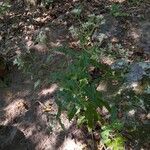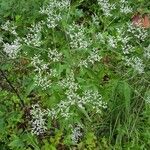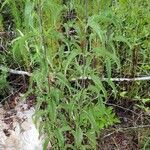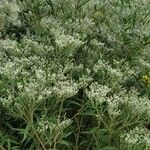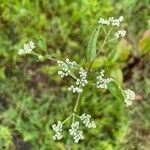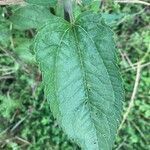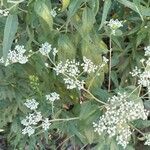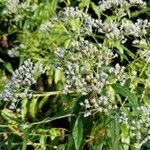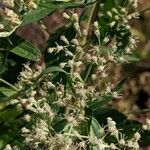Perennials, 50–150+ cm. Stems (from short caudices) single, sparsely to densely branched distally, pubescent throughout (sometimes reddish to purplish). Leaves opposite; petiolate (petioles 10–25 mm); blades ± 3-nerved, lanceolate, 20–90+ × 5–40 mm, bases rounded to slightly oblique, margins entire or serrate, apices acute, faces puberulent, gland-dotted. Heads in corymbiform arrays. Phyllaries 8–12 in 1–2 series, elliptic to oblong, 1–3 × 0.5–1 mm, apices slightly rounded to acute, abaxial faces puberulent, gland-dotted. Florets 9–15; corollas 2.5–3 mm. Cypselae 1–1.5 mm; pappi of 20–30 bristles 2–2.5 mm. 2n = 20.
Rhizomatous clump-forming perennial to 2 m high. Stems erect, densely pubescent especially towards branch-tips, ±glandular-punctate. Leaves opposite; petioles 10–35 mm long; lamina narrowly ovate, 50–140 mm long, 20–50 mm wide, rounded, broadly cuneate or ±truncate basally, serrate, acuminate. Corymbs to c. 50 cm wide. Capitula c. 5 mm long; involucral bracts c. 8–12 in 1 or 2 series. Florets white. Achenes c. 1.5 mm long, 5-ribbed, glabrous, black. Pappus bristles numerous, c. 3 mm long, scabrid.
